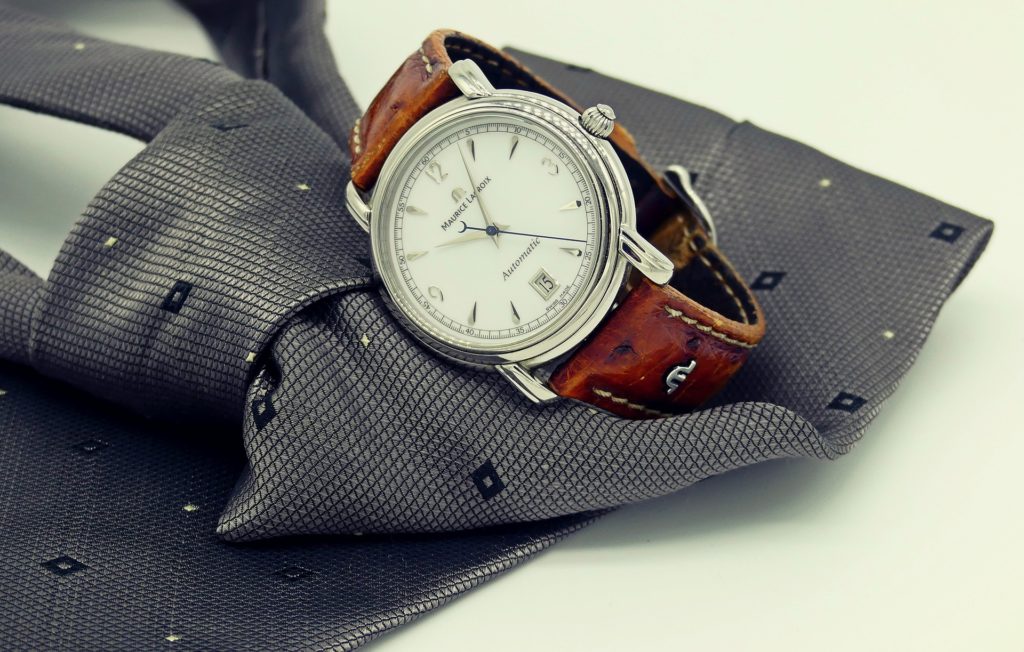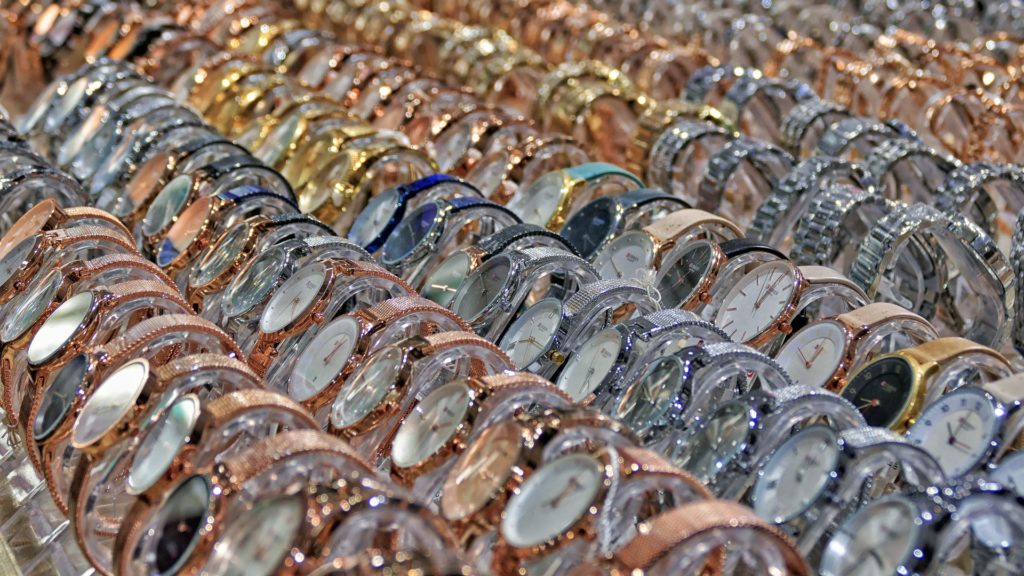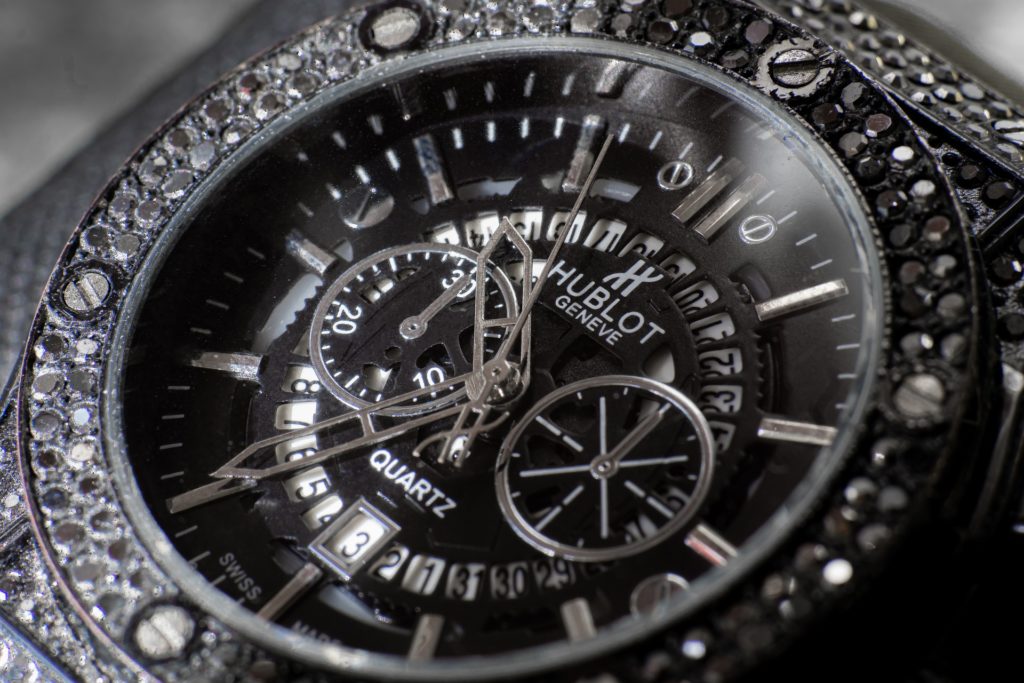Prefer to listen to us read this article? Check out our Youtube Video!
Everyone enjoys treating themselves every once in a while to something they really like. For those who love owning and purchasing watches, it can be tricky to ensure you are not spending all of your needed salary money on a watch. How much money should you have before purchasing an expensive watch?
When purchasing a watch, one should not go into debt or any financial strain because of the purchase. One percent of any yearly income should be saved up until there is enough money to purchase a high quality watch. This method can be used and adjusted to fit financial needs.
What factors do you need to consider when purchasing an expensive watch? Continue reading to learn more about the salary and watch price ratio.
Your Budget
Before going into a big purchase like a luxury watch, the first thing to factor in is the budget you will assign and stick to while purchasing your watch. While this can be difficult to stay within the price range you have predecided for your watch, this will save you in the long run. Making a budget is useless if you don’t stick to it.
While everyone likes to treat themselves and a watch is a very important statement piece for any attire, it is not worth going into debt or financial trouble.
How Do You Choose the Budget?
When looking into creating a budget, the only person who knows your situation best is yourself (or possibly your accountant). Keep this in mind while reading through this section. This system may not work for you due to a variety of different reasons and circumstances.
A great rule of thumb is to spend 1% of your yearly salary on a luxury watch. This budget allows you to increase the actual price range you allow yourself to shop in by simply saving up and waiting to purchase the watch at a future date. This system also allows for people in all different financial situations to purchase something within their price range.
If you save 1% of your yearly salary, then it won’t matter how much you make. If you make $100,000 a year, then in one year you will have enough to buy a $1,000 watch. If you make $50,000 a year, then in two years you will be able to purchase a $1,000 watch.
While creating your budget, refer to your finances and the predicted finances you will have in the future. As previously stated, a luxury watch is not worth going into debt for. Do not spend more money than you have, or will have, on a watch.
Watch Value
Many people view purchasing a luxury watch as a financial investment, however, this is not true most of the time. While there are some watches that do become more valuable over time, or whose value will remain the same, most watches lose value as time goes by. With this in mind, do not justify purchasing a more expensive watch, thinking it will financially pay off in the end. Purchase a watch that is in your price range, with the knowledge that the value will most likely drop as time goes by.

Your Taste in Watches and Accessories
For some, a watch is only used for the practicality of accessibility to the time of day. For those who only find value in the actual job of the watch, purchasing a $1,000 watch seems extremely ridiculous. When finding the correct watch for yourself or a loved one, it is important to take into account their personal taste in watches and other accessories that are commonly worn. This will help to make the correct judgment call for how much should be going into the watch.
Quality
There are some watch enthusiasts who would only consider wearing a watch if it was the highest of quality. The thing about quality is it often comes with a higher price tag. For those who are into high-quality watches, saving up 1% of their yearly income until they reach their goal is a great way to afford a new and high-quality watch they will be able to proudly wear for a long time.
Simply the Time-Telling
There are others who are only interested in purchasing a watch for the usefulness of being able to have the time of day on hand. Those who only want a watch for the practicality of the device will likely not be okay spending a large sum of money on the device. In this situation, purchasing a good-quality watch that is nothing fancy but quickly and accurately reads the time is the best option. A watch like this could comfortably be in the range between $50-100 depending on the watch chosen.
High-Value Appearance
Another common characteristic some people look for in a watch is the high-value or luxury appearance that watches can present. Having a nice-looking watch can seriously elevate someone’s look, especially when in business professional attire. It shows the value you put into your appearance.

What To Look For In A Watch
There are a lot of different factors and watch characteristics to keep in mind when purchasing a new watch, regardless of your specific needs or wants. There are certain things to ensure you look out for in the watch.
Below is a list of characteristics that watch enthusiasts always look for. All of these factors and characteristics were found on a forum where watch enthusiasts discuss their watches and various factors about the watches. To view the forum and read through the responses and comments, click here to be directed to the website.
Characteristics to Look Out for Based on Watch Enthusiasts’ Advice
- Resilent Case
- Sturdy and Strong Band/Bracelet Piece
- Long Lasting Lume
- Contradicting Dial(s)
- Moveability
- Water Resitance (depends on the person if this is a priority or not)
- Style of Watch
- History (can really add to the watch)
- Performance
- Versatile
- Value (both upon purchase and long-term)
There is a common misconception that the number of jewels inside the mechanics of a watch reflects the value and quality of the watch as a whole. This is not true. Jewels are used to help the mechanics of the watch work properly and be long-lasting. A good watch should have around 17-15 jewels, depending on how many complications are in the watch’s mechanics.







